BACK TO RESEARCH WITH IMPACT: FNR HIGHLIGHTS
Coral reefs are one of the most vital ecosystems on our planet: Home to a quarter of all marine life, they also play an important role for coastal populations. Thousands of scientists are working to mitigate climate change, study reef organisms before they disappear, and find ways to help corals survive the next century. One of them is AFR PhD researcher Camille Leonard, who is studying how grow coral more resistant to heat waves, for example by installing coral trees in French Polynesia and monitoring their growth in different environments.

Coral reefs are a food source for coastal populations and play a crucial role as a barrier against swells and tsunamis. These stunning, vast reefs are constructed by tiny animals: corals – they grow by cloning themselves and building colonies with a hard skeleton. Climate change threatens the very existence of these reefs as we know them: When the water gets above a certain temperature, corals “bleach” and essentially starve to death, threatening the entire reef.rnrn[Photo by Rachel Moore]
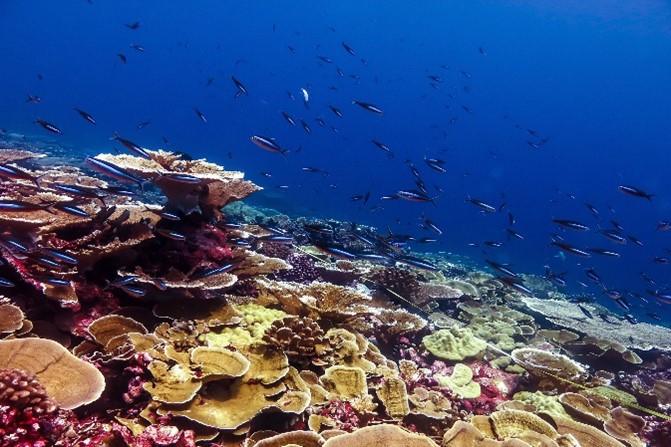
An Acropora colony on Christmas Island, Kiribati, before (left) and after bleaching that struck the reef in 2015 and 2016. Before Photograph by Kieran Cox
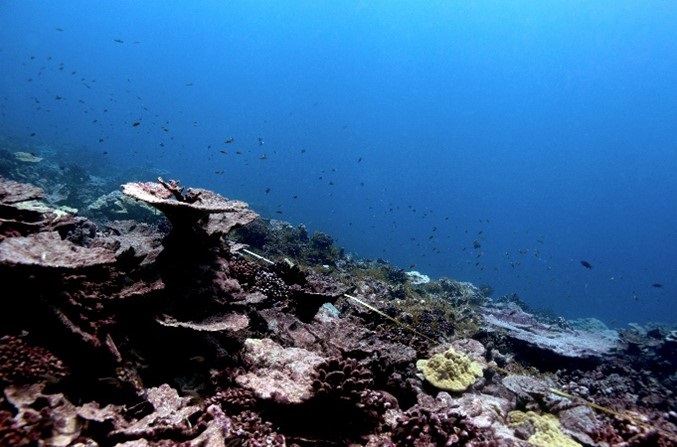
After Photograph by Kristina Tietjen | source: National Geographic

A coral reef in American Samoa before, during and after a coral bleaching event. (Photo by The Ocean Agency/XL Catlin Seaview Survey/Richard Vevers)
A race against the clock
Scientists are racing against the clock to study coral reef organisms. “There are still many things we do not know about corals: for instance, how and when certain species reproduce, what the best ways are to upscale coral restoration, and what future reefs will look like” explains marine biologist and AFR PhD researcher Camille Leonard.rnrnCoral restoration techniques have become more widespread and more efficient in recent years: Scientists have developed methods to breed and have corals spawn in captivity, and can freeze coral eggs for preservation. rnrn[Photo by Rachel Moore]rn
Additionally, researchers have found ways to seed millions of coral larvae on degraded reefs and rebuild destroyed reefs with artificial structures. To make the reefs more future-proof, the corals are pre-exposed to predicted ocean temperatures and acidity, with the aim to create more resistant coral hybrids – they can even change their symbionts to increase their heat resistance.rnrn[Photo by Jules Schligler]
“The creation of marine protected areas to prevent overfishing has also been very beneficial for the health of coral reefs,” Camille explains. Despite all our efforts to increase restoration efforts, most corals are predicted to disappear if climate change is not stopped. Our burning of fossil fuels is raising the sea temperature, which will destroy reefs worldwide and force millions of people to relocate.rn ”Camille Leonard Marine biologist and AFR PhD researcher
Coral trees to grow new reef fragments
Camille Leonard is a marine biologist at EPHE in Paris and CRIOBE in French Polynesia. As part of her AFR PhD project, she is trying to understand how corals reproduce and how marine biologists can best use them in restoration techniques.rnrn“I am trying to see whether coral nurseries can be used to select and grow coral fragments that are potentially more resistant to heat waves. rnrn[Photo by Rachel Moore]
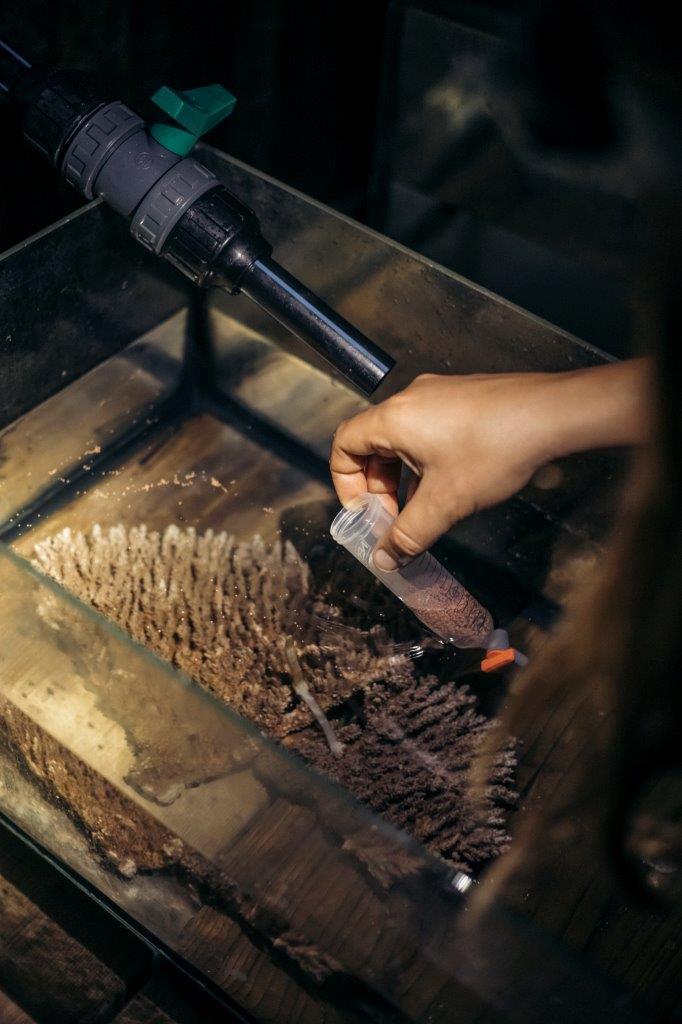
Collecting coral eggs.
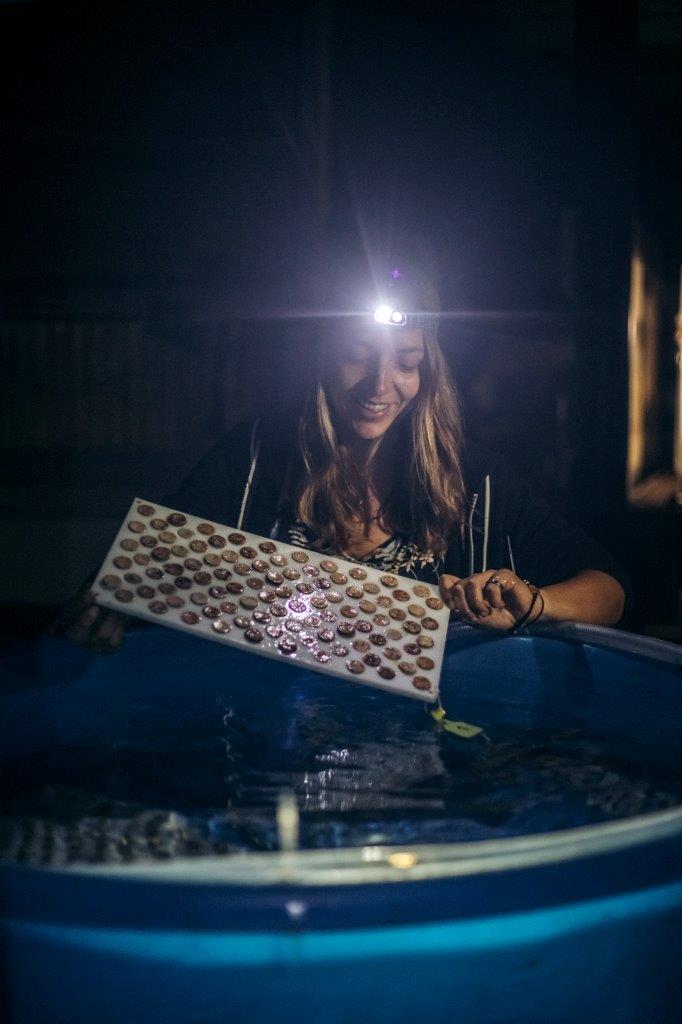
Camille with settlement substrates for coral larvae.
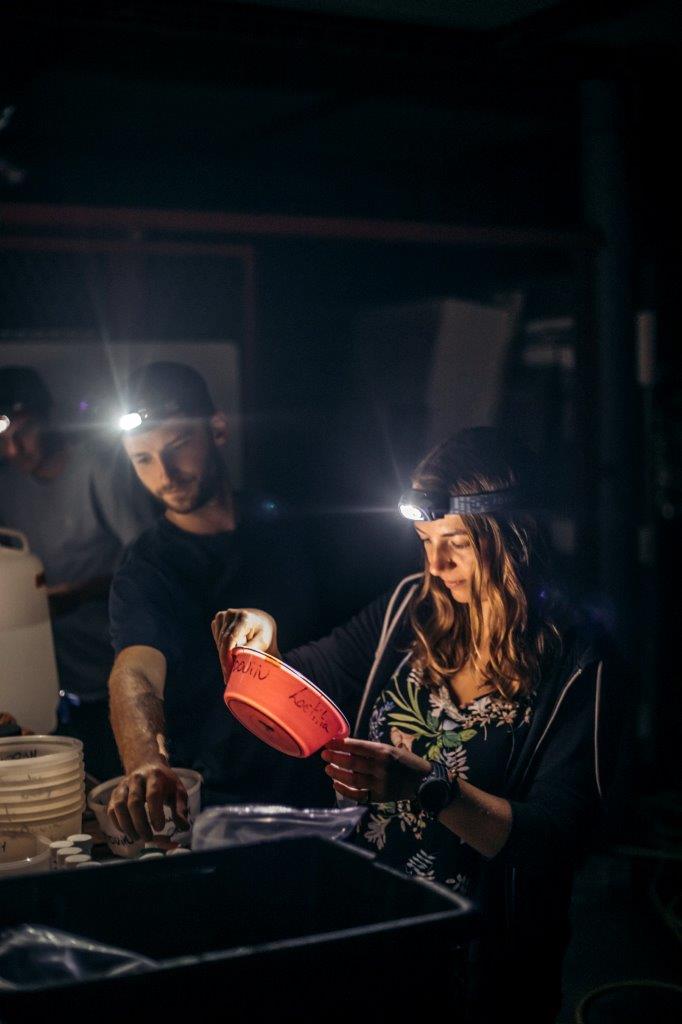
Separating coral eggs and sperm.
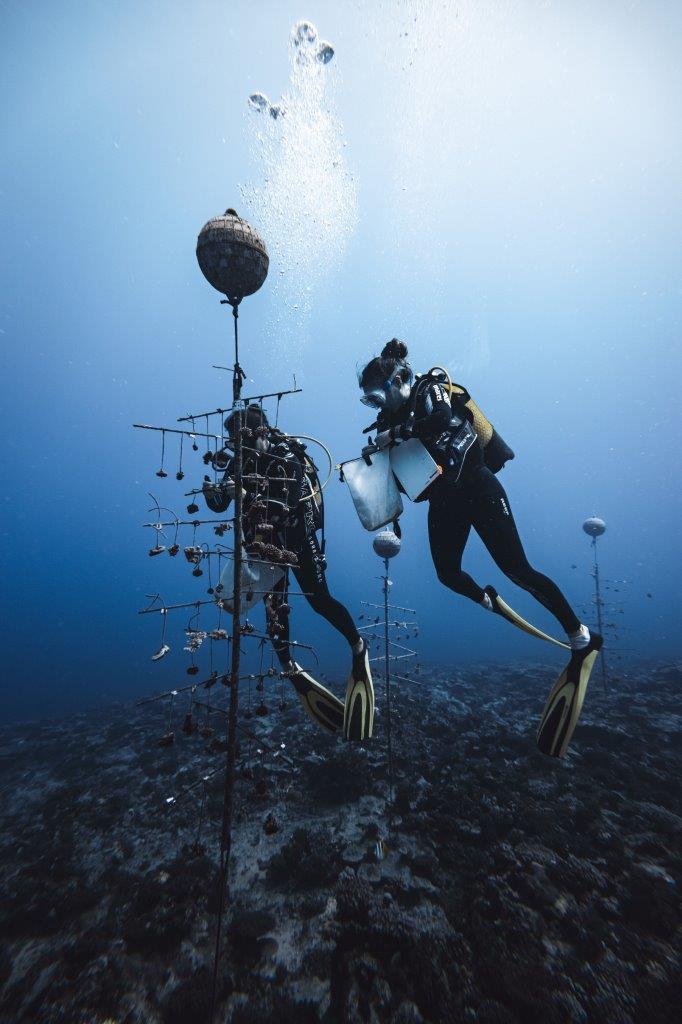
Camille installing corals with her dive buddy Isa at 30m.
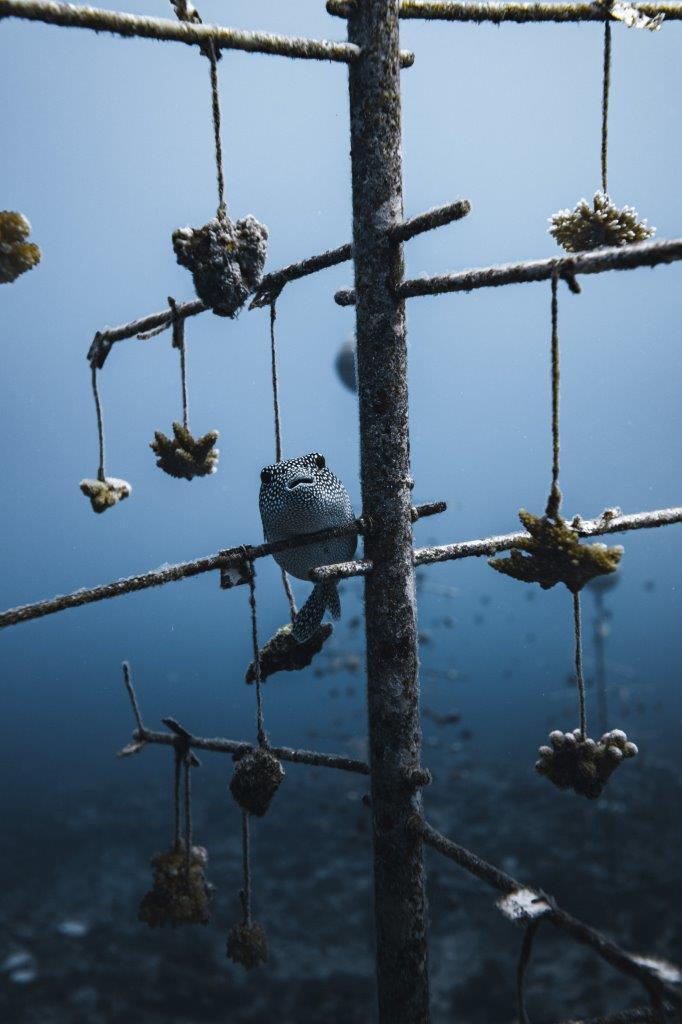
Pufferfish resting on a coral tree.
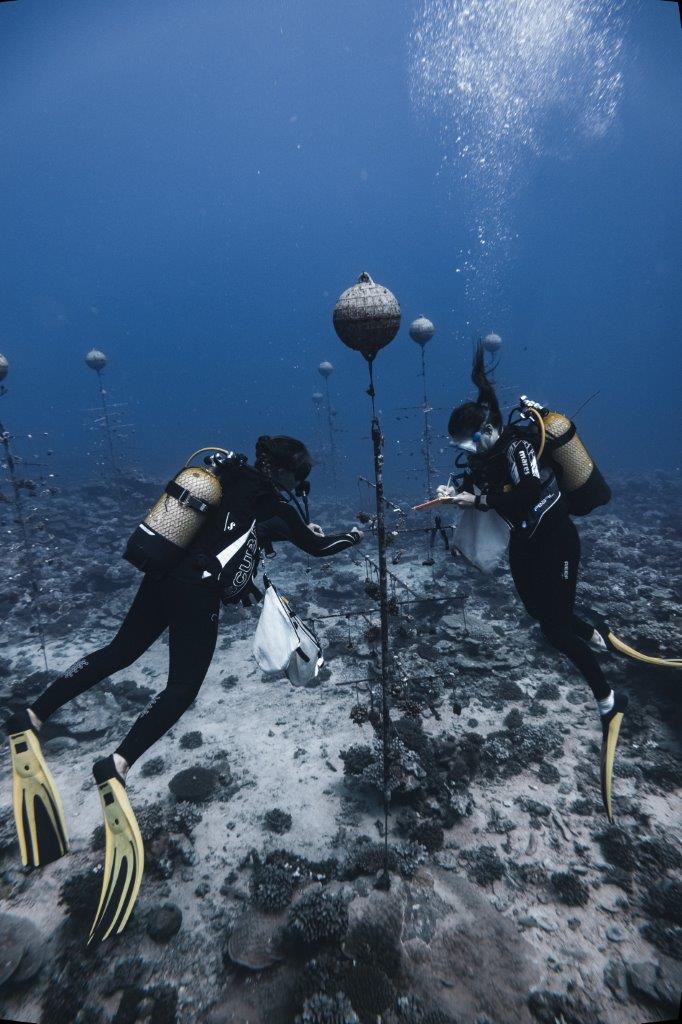
Camille working with her dive buddy Isa at their deep nursery (30m).
[Photos by Rachel Moore]
“We installed ‘coral trees’ in the shallow lagoon and on the deeper forereef in Mo’orea, in French Polynesia. When the fragments reach a certain size, they can be planted back onto the reef. I am comparing their growth and health in these different environments.rnrn“During spawning, we can study their reproduction and seed their larvae onto degraded areas. I am also collaborating with a company called SEABOOST to find the best materials and shapes for building artificial reefs.”rnrn[Photo by Mathieu Reynaud]
“rnWe have been able to better understand how different artificial materials, textures and shapes influence the first life stages of corals. We have also been able to witness and describe spawning events for coral species that had not been documented before!rn ”Camille Leonard Marine biologist and AFR PhD researcher
MORE ABOUT CAMILLE LEONARD
u003cstrongu003eAbout her research, peer to peeru003c/strongu003ernrnu003cemu003e“I am interested to see the growth rate and heat resistance of different Acropora species and different genotypes. Different environments can also influence the physiology of corals, the diversity of their symbionts and their survival chance. u003c/emu003ernrnu003cemu003e“In parallel, I am studying whether corals grown in nurseries have the same reproductive output as wild corals, and whether crosses of resistant corals could produce more resistant offspring.u003c/emu003ernrnu003cemu003e“Lastly, I am studying the influence of artificial materials, different textures and benthic communities on the settlement rate, survival and growth of coral recruits.”u003c/emu003ernrnu003cstrongu003eHow she came to study coral reefsu003c/strongu003ernrnu003cemu003e“I have always been passionate about science, and I fell in love with coral reefs the first time I got to snorkel on a reef. Now I have become an avid diver and I feel very fortunate to be able to combine my work and my passion. I think corals are the most fascinating animals. They are also a good way to raise awareness on our need for urgent climate action, being one of the ecosystems most threatened by it.”u003c/emu003ernrnu003cstrongu003eWhy she loves being a scientistu003c/strongu003ernrnu003cemu003e“To me, being a scientist is the best job, because we never stop learning and we can never be bored. There are always more things to discover. Sharing our results with the public and contributing to our understanding of the world are very rewarding experiences.”u003c/emu003ernrnu003cstrongu003eWhere she sees herself in 5 yearsu003c/strongu003ernrnu003cemu003e“In 5 years, I will hopefully still be studying marine biology, whether it is on corals or other organisms. I would like to improve my skills in genetics, bioinformatics, and scientific writing.”u003c/emu003ernrnu003cstrongu003eMentors with an impactu003c/strongu003ernrnu003cemu003e“I’ve been very lucky to meet many people I look up to during my PhD at the CRIOBE. The person that had the biggest impact however is my supervisor Laetitia Hedouin, who has been inspiring me to do research for years. I’m extremely grateful to her for giving me this opportunity and for teaching me so much.”u003c/emu003e
About Spotlight on Young Researchers
Spotlight on Young Researchers is an annual FNR campaign where we shine a Spotlight on early-career researchers across the world with a connection to Luxembourg. Over 100 features have been published since the first edition in 2016.
Discover all FNR HighlightsRelated highlights
Spotlight on Young Researchers: Towards fair health for all
Access to essential health services is considered normal in high-income countries, while they are out of reach for many in…
Read more
Spotlight on Young Researchers: Improving protein folding prediction with statistics
Proteins are the building blocks of life: they play an important role in metabolism, immune defence and DNA replication. Their…
Read more
Spotlight on Young Researchers: Building AI tools to help fight disease
AI developments have led to improvements in disease research by enabling new approaches in the study of genes, molecules and…
Read more
Spotlight on Young Researchers – Revisited: From Luxembourg, to Cambridge, France, and an ERC grant
“Would matter be perfect, it would be boring” says Guillaume Nataf, who has an oozing passion for physics and teaching…
Read more
Spotlight on Young Researchers: Advancing ecosystem monitoring with remote sensing and innovative models
The health of terrestrial ecosystems is intricately linked to the sustainability and stability of society: forests, grasslands, and cropland, play…
Read more
Spotlight on Young Researchers: Unravelling the role of calcium signalling to overcome melanoma drug resistance
Cutaneous melanoma is the most serious type of skin cancer and the sixth most frequent cancer in Europe. Despite progress…
Read more